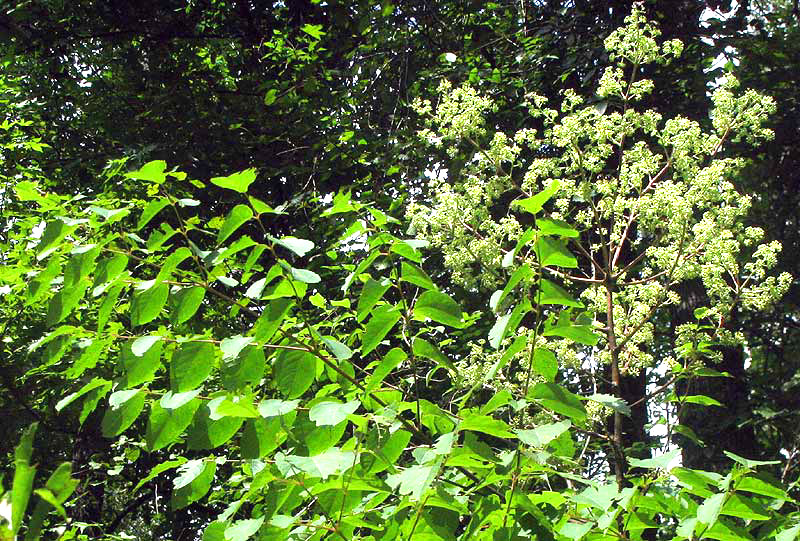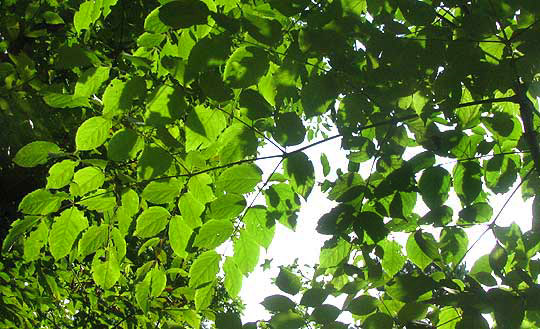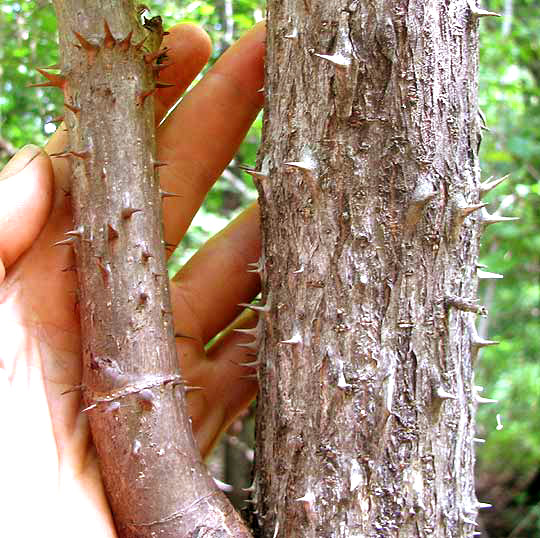Excerpts from Jim Conrad's
Naturalist Newsletter

from the July 22, 2012 Newsletter issued from the woods of the Loess Hill Region a few miles east of Natchez, Mississippi, USA
DEVIL'S WALKINGSTICK FLOWERING
At woods edges these days a small -- usually about 20 feet tall (6m) -- fairly common but very unusual tree is flowering, shown above. Topping the tree's nearly unbranched trunk, the massive, yard-wide (1m) flower head containing hundreds of tiny, whitish flowers is spectacular and unusual, but even more transfixing is the twice-compound leaf. In the picture, the entire collection of leaflets occupying the left and center part of the picture constitutes one gigantic compound leaf. In fact, often this species is described as producing the largest of all temperate, North American leaves, up to 48 inches long
(1.2m). A leaf is what emerges from a stem's leaf bud, so there must be some fancy folding inside this tree's buds to accommodate such a gigantic, complex leaf. Bellow you can better see a leaf's structure, with its petiole attaching to the stem at the far right.

The most-used English name for this tree is Devil's Walkingstick, though the species is noteworthy enough to go by several such names, including Hercules' Club, Prickly Ash, Prickly Elder and Angelica-tree. It's ARALIA SPINOSA, a member of the Aralia Family in which we also find Ginseng, Spikenard and English Ivy.
With such names it's no surprise that Devil's Walkingstick stems are gloriously spiny, as seen below:

How many times as a kid in Kentucky did I get a bloody hand while climbing a steep hill, helping myself along by grabbing onto tree trunks, one of which turned out to be a Devil's Walkingstick?
Devil's Walkingsticks occur from New York to Florida westward to Ohio, Illinois, and Texas, preferring rich, moist soil. They often form clonal thickets by sprouting from their roots.
The tree's young leaves before the prickles form can be eaten as a potherb. Later in the year the big flowering head will be replaced by a big fruiting head absolutely loaded with black, elderberry-like berries. I read that North America's indigenous people ate the fruit, but I find their taste too bitter to deal with. Birds like them, though. Also I read that the berries are medicinal, used in too many ways to mention, so that's another indication that they shouldn't be eaten.